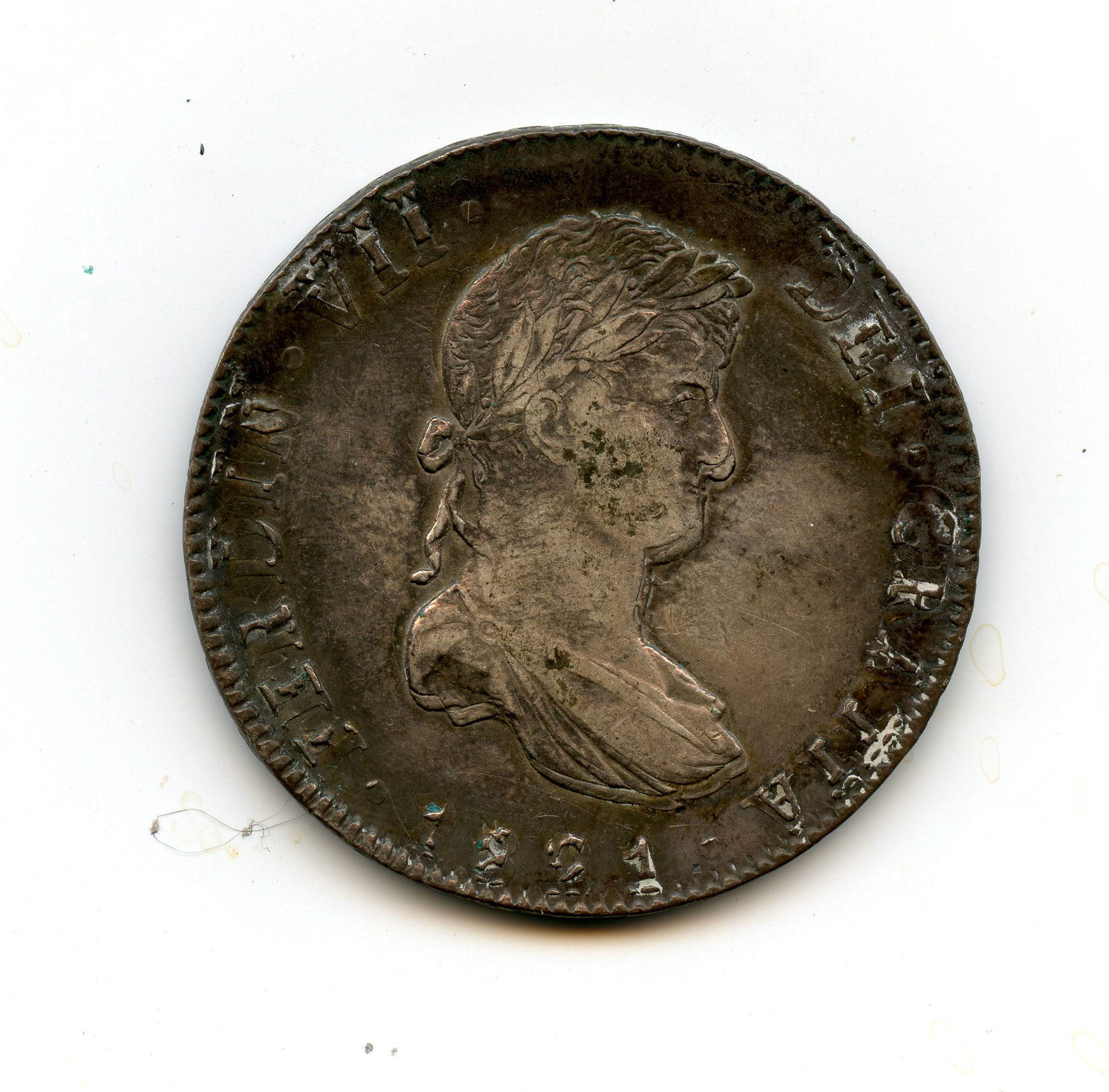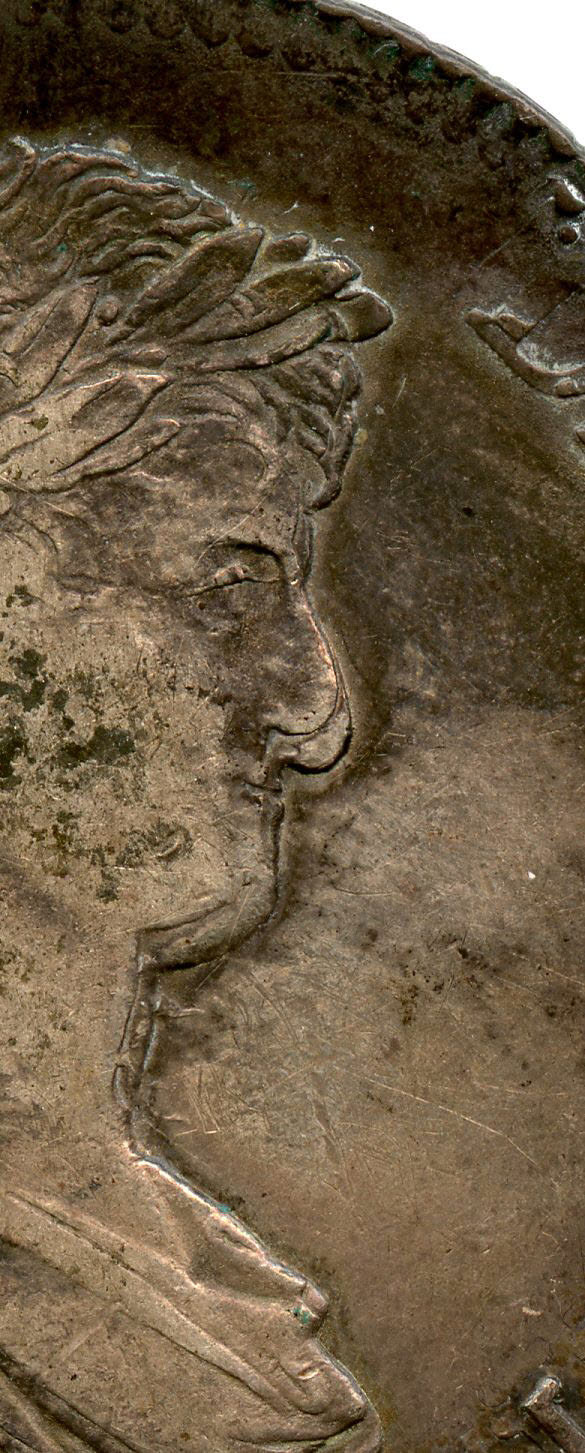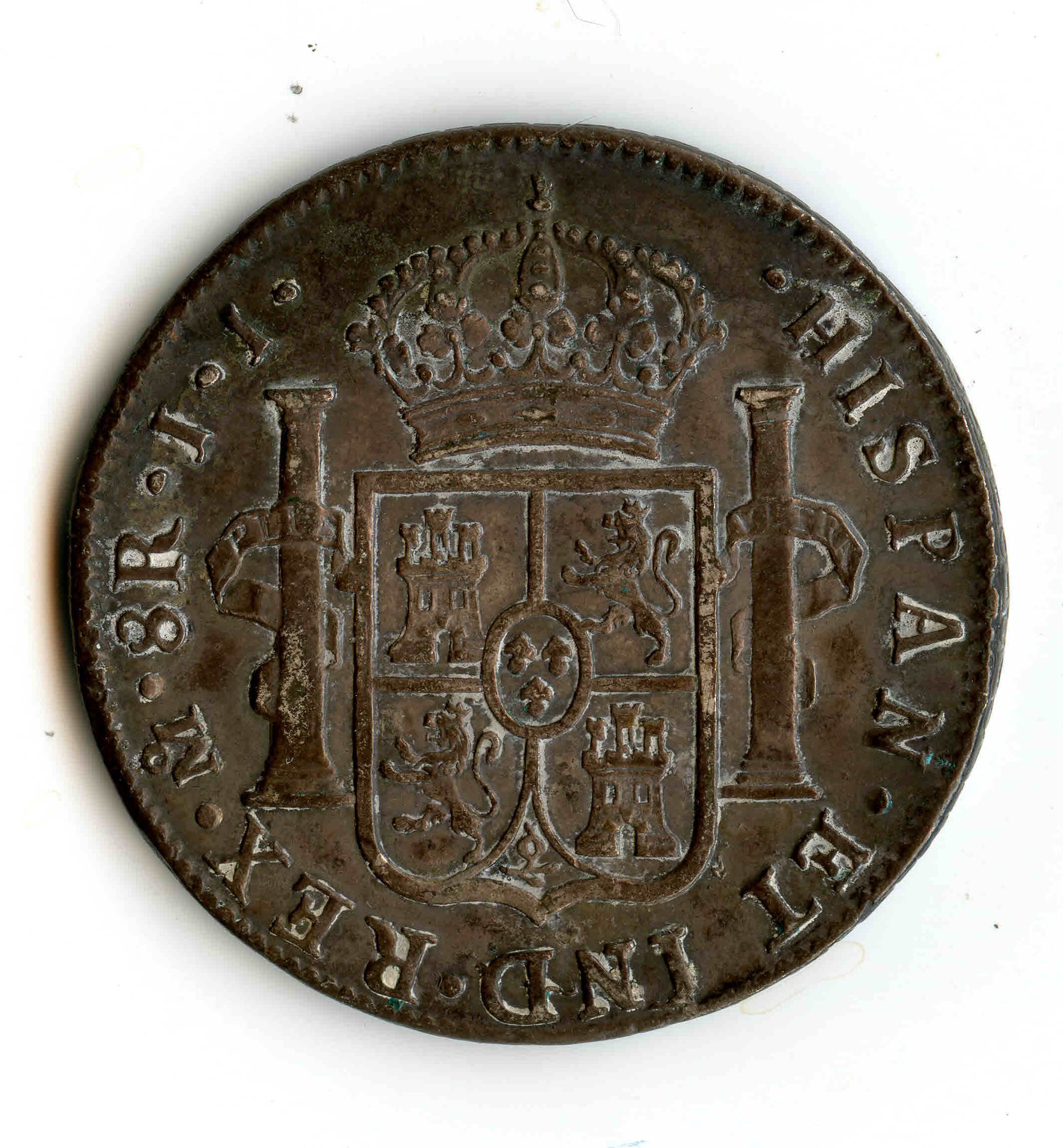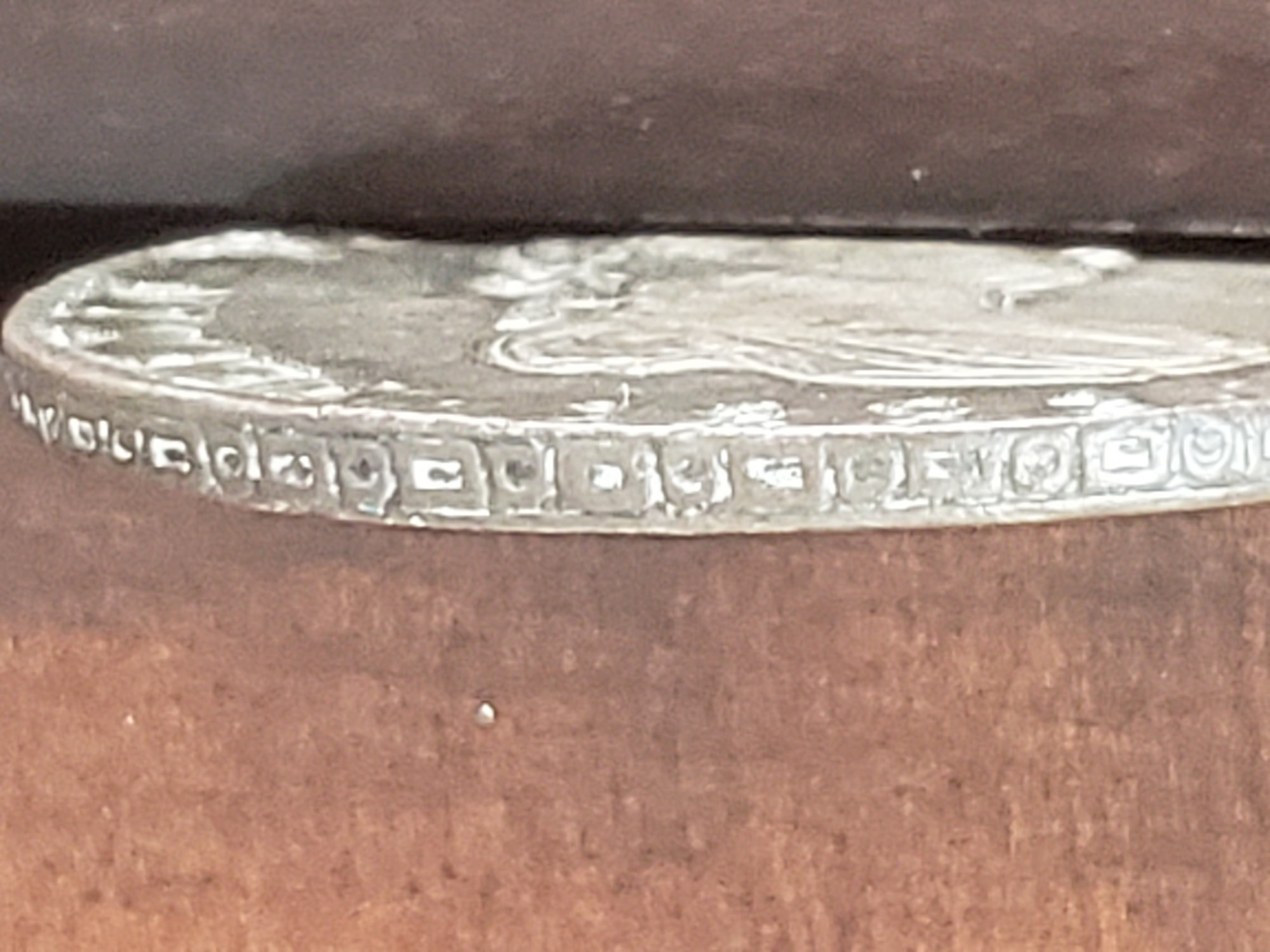Seeking Dark Side Help on this 8 R 1821- DOUBLE STRUCK?
HI All-
Can somene shed some light on this? Apprears to be double struck...is that common?


Just the Obverse, not the reverse.
Regards and thanks as
RJ
0
HI All-
Can somene shed some light on this? Apprears to be double struck...is that common?


Just the Obverse, not the reverse.
Regards and thanks as
RJ
Comments
The doubling makes sense, since the coin continued to rest on the bottom die as the top die came down again with a slight wobble.
The doubling is scarce on these, but examples do come up without demanding much premium.
Now, there are a number of reverse elements that are throwing a red flag for me and i'm trying to decide if it's due to the extra die pressure because of the double strike, or something else...
What's the weight? And can you include an edge photo?
Weight is 26.85 grams, edge shot below...thoughts??

Put this coin on Coin Talk Forum - world coins. Several authors of reference books post there. The circles on the edge of your coin look squared off a little. They should be round and equal distance from the rectangles. Edge wear can make these shapes look "off."
As @Insider2 pointed out, the squared-off circles in the edge point to a likely Class 2 counterfeit made between 1870 and 1930 to take advantage of the premiums associated with "Bustman" dollars in China trade. These are full weight restrikes and most dealers (and authenticators at PCGS and NGC) would pass them as authentic.
Instead of CoinTalk, I would post this coin on Coin Community: https://coincommunity.com/forum/forum.asp?FORUM_ID=7
@TwoKopeiki said: "Instead of CoinTalk, I would post this coin on Coin Community: https://coincommunity.com/forum/forum.asp?FORUM_ID=7"
YES Thanks for the significant correction I got my forums mixed up,
This is an interesting statement and I would like to know your source for further research.
https://www.civitasgalleries.com
New coins listed monthly!
Josh Moran
CIVITAS Galleries, Ltd.
Counterfeit Portrait Eight-Reales The Un-real Reales by Robert Gurney. Plus viewing thousands of these coins using a stereo microscope.
I alerted NGC about the information in this book several months ago. Just as the "micro "O" counterfeits have escaped detection for so long, during the same time period both Portrait and Cap & Ray coins were being faked. Some of these are found in TPGS slabs. I'll quote the poster above: "These are full weight restrikes and most dealers (and authenticators at PCGS and NGC) would pass them as authentic." I'll add major auction houses to this.
It is a virgin field of authentication for authenticators in the US who are unfamiliar with these coins. The good news is that the fakes are very collectable and often bring more than the genuine specimens.
Huh ?
I give away money. I collect money.
I don’t love money . I do love the Lord God.
Makes no difference, the experts that made coincommunity a haven for these types of coins have all stopped posting.
Highly enthusiastic about world coins, contemporary circulating counterfeits and unusual stuff
As far as the coin, the edge has some mis-shapen portions, but it also appears to be the site of one of the overlaps in the middle of the section pictured, which could explain this. Clearer photos of other sections would be helpful, including the one directly opposite..
Highly enthusiastic about world coins, contemporary circulating counterfeits and unusual stuff
@CIVITAS - Josh, the best source would be sitting down with Bob Gurney over a beer and chatting about his research into these restrikes.
Contemporary counterfeits often carry a premium. The fakes made for trade with China do not, unless perhaps you find one in a top tier TPG slab.
@jgenn said: "The fakes made for trade with China do not [carry a primum], unless perhaps you find one in a top tier TPG slab.
Do you think that's because those particular counterfeits usually trade as genuine coins by most dealers/collectors?
I think it's because they are more recent than those documented by Riddell, so not particularly contemporary. True contemporary counterfeits are scarce. Those made for the China trade are plentiful. There is also the issue that the best of the China trade counterfeits are nearly indistinguishable from the genuine and can require XRF to correctly identify -- these would certainly fool most dealers and collectors.
While I am far far from an expert on the real-type coinage from Mexico, I do see lots of "doubling" in my area of expertise ... Canada Vicky large cents. The obverse doubling is mechanical or machine doubling rather than "double-struck". It is caused by the obverse working die being loose in the keeper/holder. Once the coin is struck initially, the die slightly rotates/slips as it is released from the planchet, causing the doubling or smudged image. This one has a fairly large offset and would sell at about a 50% premium over a normal one. The coin could be a counterfeit based on its other attributes, if that's what the experts say, but the doubling is mechanical/machine and not repunched or double-struck. Once the screws are tightened that hold the die in place, the "doubling stops" and you get a normal planchet strike.
@Syl these were struck only once using the large screw presses. Because of the speed with which the screw rebound and brought the top die back up before coming down for the next strike, the person sitting next to the strike zone and responsible for replacing the struck coin with a new planchet only had a few seconds to do so. Sometimes that was not enough time to get the coin out and the top die would come down again, resulting in a second strike. The die was held with a large metal pin that allowed for a slight wobble that you see as the second strike on the obverse.